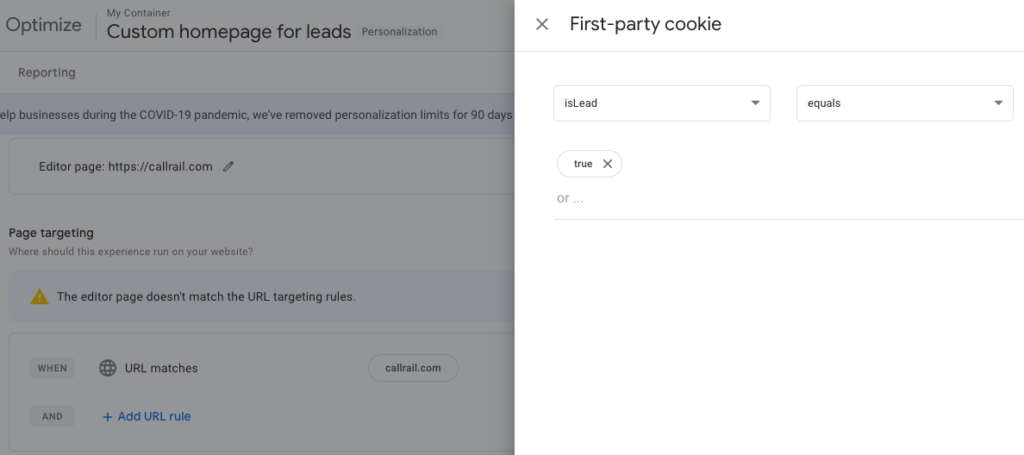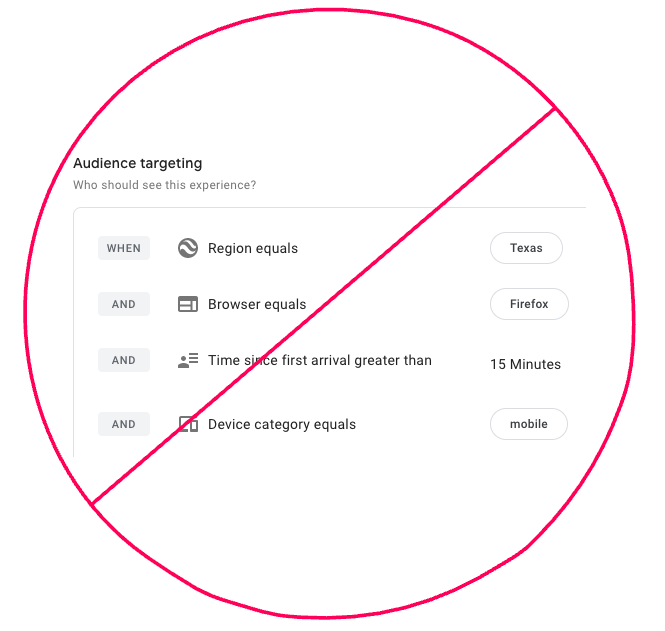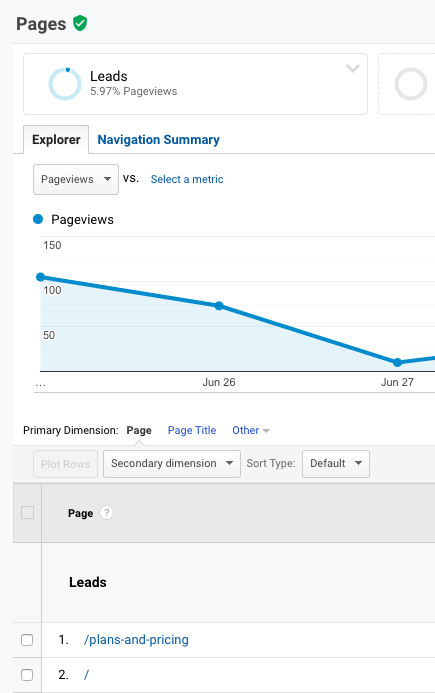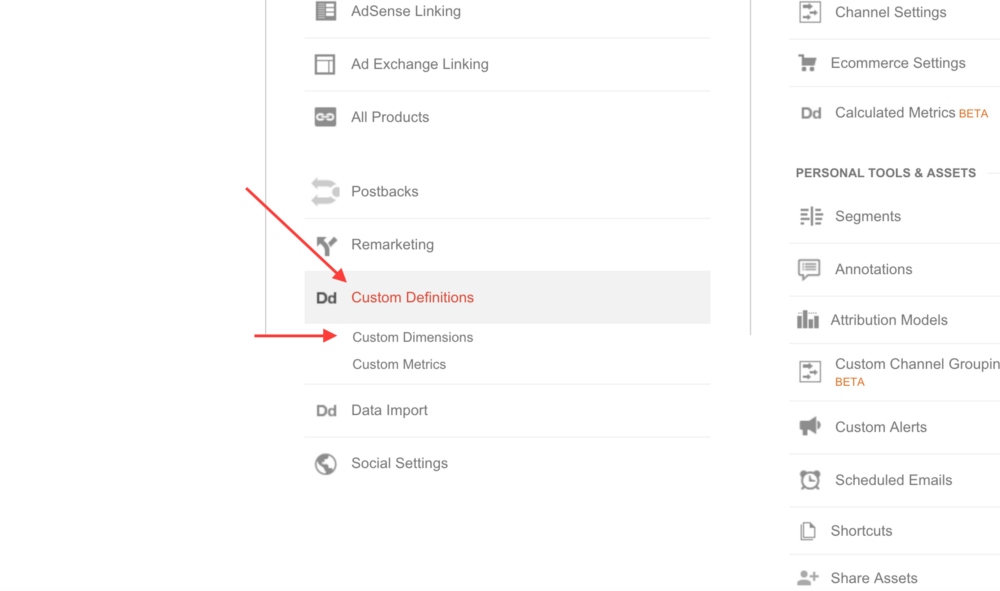How Hotjar Can Help You Convert More Leads
Hotjar is a great complement to Google Analytics. Layering qualitative and visual data over the raw numbers gives you another dimension of insights.
But just like with your Google Analytics data, if you ignore key segments, you do so at your own risk.
Imagine, for example, that a heat map shows you that only 20 out of every 1,000 of visitors click on your Product Tour CTA. In fact, the scroll map shows you that only 15% of visitors even reach that section of the page.
You might conclude that the section and CTA don’t matter, and consider removing them.
Now imagine that all 20 of those visitors are leads – visitors who have identified themselves by signing up for a free trial, downloading a resource, or attending a webinar. Suppose that on average 15 of those 20 leads end up turning into opportunities. The Product Tour just went from wasted space to one of the highest-value interactions on the site!
Fortunately, it just takes a bit of work to begin segmenting your most valuable visitor data in Hotjar. Let’s look at how to do this with leads.
Why leads?
While leads might not be your most important identifiable visitor segment, for most B2B SaaS sites they deserve special attention. In fact, they’re already getting special treatment in your nurture campaigns. (Right?) And hopefully you’re personalizing offers and CTAs for them as well.
Still, the steps below will work for any segment you can identify. Target accounts, industry of interest, or existing customers can all be given VIP status in Hotjar.
Setup
Before you begin, make sure you have two things in place.
1. Hotjar Plus or Business
The free plan doesn’t support custom tags and triggers.
2. A way to identify leads on your website
Not sure how to do that? This post will walk you through it. And if you’re using Marketo, FunnelEnvy automatically syncs lead status with all your frontend tools – Google Analytics, Drift, Google Optimize, and yes, Hotjar.
Tag session recordings
Watching playback of visitor sessions is a great way to put yourself in your customer’s shoes. It’s also dauntingly time consuming. One day’s worth of recordings could take a month to view.
So clearly you need to prioritize what you focus on. Watching a half dozen leads interact with your website will yield more insight than watching a hundred anonymous visitors land, scroll, and bounce.
All you need to do is execute a single line of code when you identify a lead on the site:
hj('tagRecording', ['leads']);
Set this up, and you’ll be able to filter recordings later.
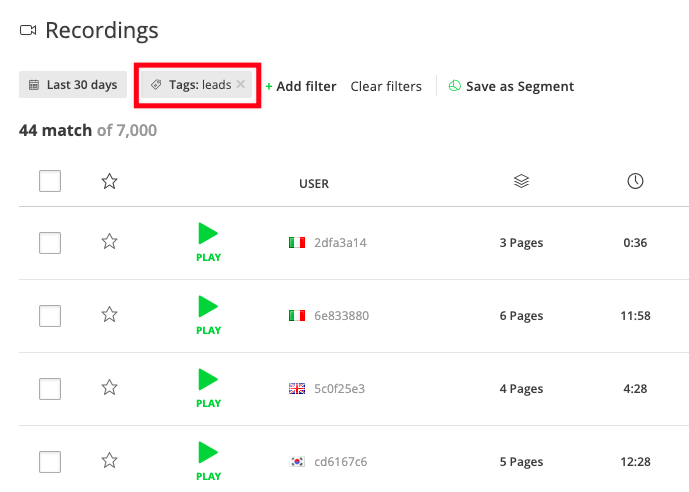
(See the Hotjar docs for more detail on how this works.)
Trigger heat maps
Instead of mixing clicks from anonymous visitors, customers, and leads all into a single heat map, you can create one for leads only.
You’ll need to create a heat map with a JavaScript trigger, then fire the trigger when leads visit the page in question.
If you’re using FunnelEnvy for Marketo, it’s as easy as adding a Trigger to Google Tag Manager:
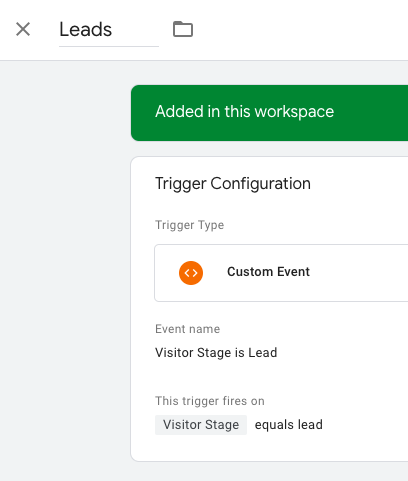
(FunnelEnvy for Marketo can push visitor stage to the Data Layer, meaning you can use it to trigger any Tag)
Then create a Custom HTML Tag to fire the Hotjar code:
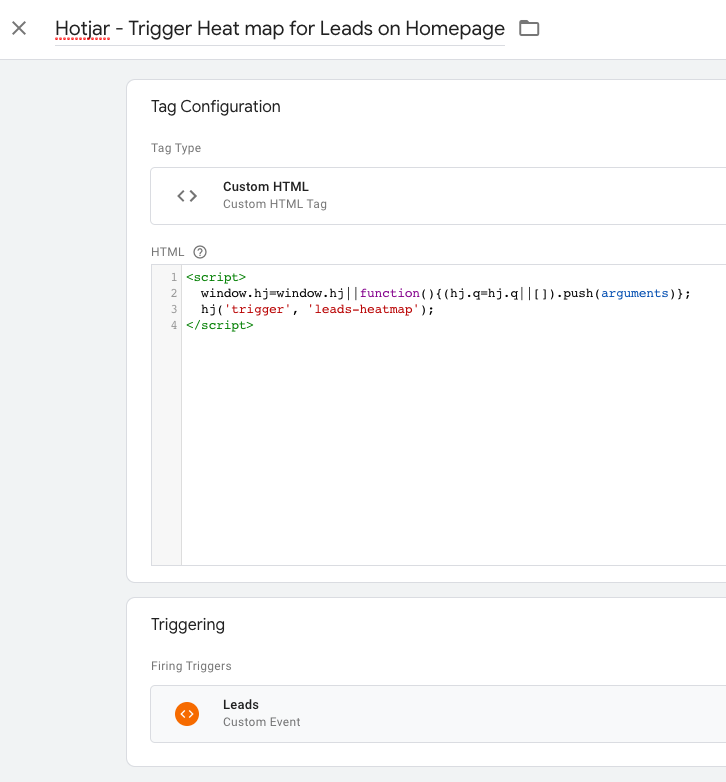
Create a custom poll for leads only
What page has the highest exit rate? What page do visitors spend the most time on? What are they looking for, and not finding?
The answer is probably different for leads compared with anonymous visitors. The only way to find out is to ask.
Lucky for you, you can trigger a custom poll with the same code that triggers custom heat maps.
So if you’ve added the Google Tag Manager logic shown above, all you have do to is create a poll with a JavaScript trigger. And you’re done!
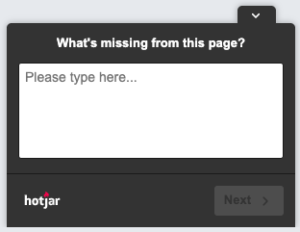
Ask every visitor this question, get a lot of noise. Ask leads only, find out what matters
Where to start
There’s a lot you can do to better understand (and more effectively convert) leads on your website. As a first step, just tag and watch some session recordings to see how leads navigate your site.
This requires a way to identify those leads in the first place. Solve that problem once, though, and you open up deeper insights in Google Analytics, custom playbooks in Drift, and personalization options in Google Optimize.
If you’re using Marketo, FunnelEnvy solves this for you. No need to bring in the dev team and turn it into a multi-month project. If you’re ready to start giving leads the special treatment they deserve, just get in touch.

